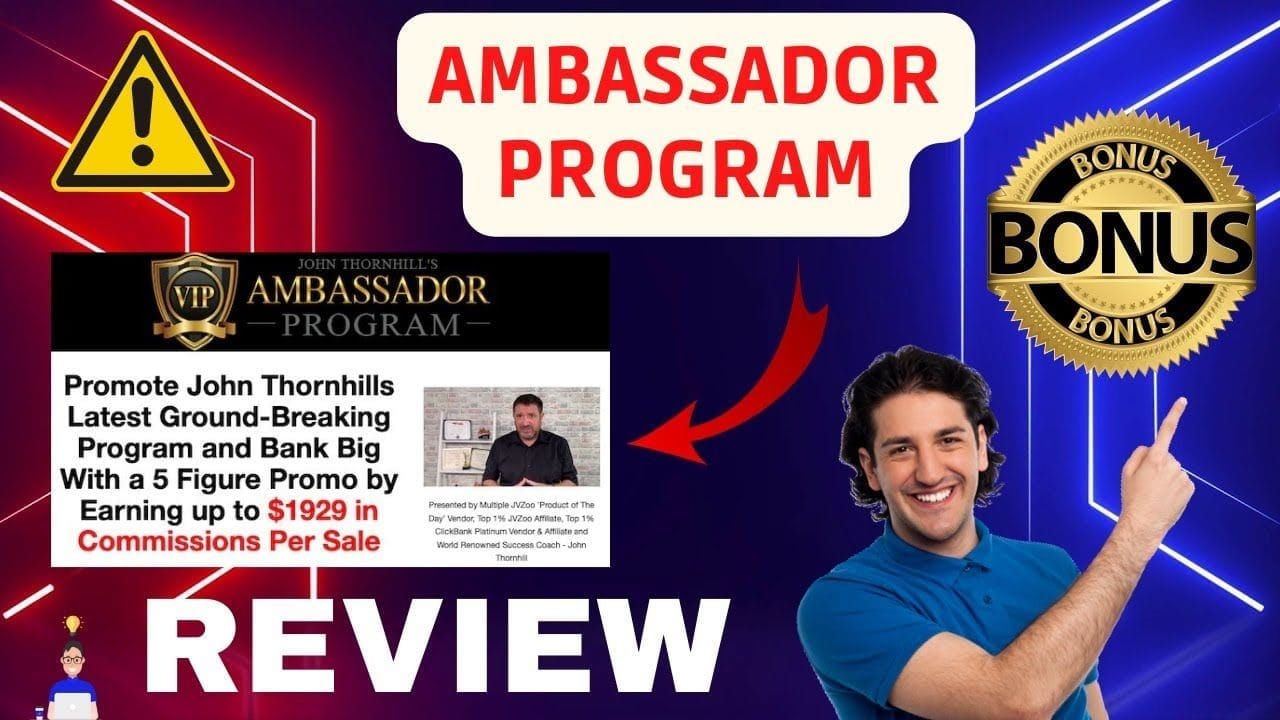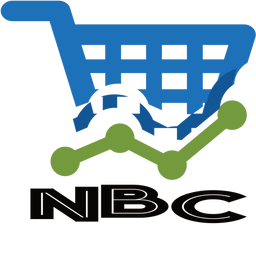Post-Webinar Follow-Up: Turning Attendees Into Loyal Customers After Your Launch

After hosting a successful webinar and generating a great turnout of attendees, the next crucial step is converting those attendees into loyal customers. In this article, we will explore the post-webinar follow-up process and how it can help you nurture relationships and drive sales after your launch. By implementing effective strategies and personalized communication, you can turn webinar attendees into valuable, long-term customers who are eager to engage with your brand.
Importance of Post-Webinar Follow-Up
Understanding the value of post-webinar communication
After hosting a webinar, it's easy to feel like the job is done and move on to the next project. However, the real value lies in the follow-up after the event. Post-webinar communication is crucial for building and maintaining strong relationships with your attendees. It shows that you value their time and are committed to helping them even beyond the webinar itself. By staying in touch and providing additional support, you can turn attendees into loyal customers and advocates for your brand.
Retention and customer loyalty through follow-up
Follow-up communication is not just a nice gesture; it has a direct impact on customer retention and loyalty. When you reach out to attendees after the webinar, you demonstrate your commitment to their success and showcase your expertise. This fosters a sense of trust, which is essential for building long-term relationships. By regularly engaging with your audience, you can stay top-of-mind and position yourself as the go-to resource in your industry. This, in turn, leads to increased customer loyalty, repeat business, and referrals.
Effective Timing of Post-Webinar Follow-Up
Choosing the right time frame
Timing is everything when it comes to post-webinar follow-up. You want to strike while the iron is hot but also give attendees enough time to digest the information they received during the webinar. A good rule of thumb is to send a follow-up email within 24 to 48 hours after the event. This way, your brand and the webinar content are still fresh in attendees' minds, but they've also had a chance to process and reflect on the material.
Timing strategies for different types of attendees
Not all attendees are alike, and their level of interest or urgency in your offering may vary. It's important to tailor your follow-up timing strategies accordingly. For highly engaged attendees who expressed a strong interest during the webinar, consider reaching out with personalized follow-up emails within the first 24 hours. For those who seemed less engaged or may need more time to consider, a follow-up email within 48 hours can be more appropriate. By segmenting your audience and understanding their behavior during the webinar, you can optimize your timing strategies for maximum impact.
Analyzing Attendee Behavior
Understanding attendee engagement during the webinar
During a webinar, it's essential to monitor attendee behavior to gain valuable insights into their engagement levels. Look for signs of active participation, such as asking questions, providing answers, or engaging in chat discussions. These are strong indicators of attendees' interest and willingness to engage further. Pay attention to their level of attention, participation, and questions asked during the webinar to gauge how likely they are to convert into customers.
Post-webinar analysis of attendee responses
Once the webinar is over, it's crucial to analyze attendee responses to measure the success of your event and identify potential leads. Look at metrics such as attendance rates, engagement levels, and responses to polls or surveys. This data can help you identify individuals who showed a high level of interest and have a higher likelihood of converting into customers. By analyzing attendee responses, you can prioritize your follow-up efforts and allocate resources effectively.
Determining quality leads based on attendee behavior
Not all webinar attendees are created equal when it comes to their potential as quality leads. By analyzing their behavior during the webinar, you can identify those who are most likely to convert into paying customers. Look for attendees who asked insightful questions, actively participated in discussions, and showed a genuine interest in your offering. These individuals are more likely to engage further and become loyal customers. By focusing on quality leads, you can tailor your follow-up strategies and achieve a higher conversion rate.
Crafting Effective Follow-Up Emails
Creating personal and meaningful content
When crafting follow-up emails, it's important to make them personal and meaningful. Address the recipient by name and reference specific points from the webinar that resonate with them. Show that you listened and understood their needs and challenges. Customize the content to reflect their unique interests and provide actionable advice or solutions. By tailoring the follow-up email to each recipient, you demonstrate that you value their individuality and are invested in their success.
The elements of an effective follow-up email
An effective follow-up email should have a clear and concise subject line that grabs the recipient's attention. Begin with a warm and friendly greeting, thanking the attendee for their participation in the webinar. Recap the key takeaways from the webinar and highlight any additional resources or offers available to them. Include a call-to-action that encourages further engagement, such as scheduling a one-on-one consultation or accessing exclusive content. End the email with a genuine and personalized closing, inviting the recipient to reach out with any questions or concerns.
Strategies to generate responses via email
Getting a response to your follow-up email is the ultimate goal. To increase the chances of receiving a reply, consider using strategies such as personalized subject lines that pique curiosity or urgency. Use storytelling techniques to create an emotional connection and make the email more memorable. Include open-ended questions that encourage recipients to share their thoughts or challenges, fostering a two-way conversation. Additionally, consider incorporating interactive elements such as surveys or polls directly within the email to gather valuable feedback and engage recipients further.
Incorporating Feedback Loops
Importance of attendee feedback
Attendee feedback is a valuable source of insight that can help you improve your future webinars and overall customer experience. By actively seeking feedback, you demonstrate your commitment to continuous improvement and willingness to listen to your audience. Attendee feedback allows you to identify areas of improvement, address any concerns, and refine your offerings to better meet their needs. It also helps you identify what worked well and capitalize on your strengths.
Methods to collect and analyze feedback
To effectively collect and analyze attendee feedback, consider using methods such as post-webinar surveys, feedback forms, or direct communication channels. Post-webinar surveys can be sent via email or incorporated into follow-up emails, making it easy for attendees to provide feedback. Feedback forms on your website or event platform can also capture valuable insights. Additionally, encourage direct communication with attendees through email or social media to gather more in-depth feedback and foster meaningful connections. Analyze the feedback received and identify common themes or areas for improvement.
Using feedback to improve future webinars
Feedback should not be collected for the sake of it; it should be used to drive meaningful change and improve future webinars. Analyze the feedback received and identify actionable insights. Look for common pain points or suggestions for improvement and prioritize them based on impact and feasibility. Use this feedback to refine your webinar content, delivery style, and engagement strategies. By continuously incorporating attendee feedback, you can deliver more valuable and engaging webinars that resonate with your audience.
Offering Additional Resources
Identifying valuable additional content
Offering additional resources to your webinar attendees is a great way to provide ongoing value and maintain their engagement. Identify valuable content that complements the webinar topic and helps attendees deepen their knowledge or overcome specific challenges. This can include articles, whitepapers, case studies, videos, or interactive tools. By offering additional resources, you demonstrate your expertise and commitment to helping attendees beyond the webinar itself.
Using resources to maintain engagement
Once you have identified valuable additional resources, strategically distribute them to attendees to maintain engagement. Consider sending follow-up emails with links to relevant articles or case studies that further build on the webinar content. Offer exclusive access to premium resources for webinar attendees, further incentivizing their engagement and loyalty. Incorporate these additional resources into your marketing automation or customer relationship management systems to deliver personalized content based on each attendee's interests or needs.
Effective distribution of additional material
When distributing additional resources, be mindful of the channels and methods you use. Leverage your email marketing platform to streamline the distribution process and track engagement rates. Segment your audience based on their interests or behavior during the webinar to ensure they receive the most relevant content. Promote the additional resources on your website, social media channels, or within your webinar platform to expand their reach and increase visibility. By effectively distributing additional material, you can maximize its impact and drive continued engagement with your audience.
Utilizing Social Media Channels
Effective use of social media for post-webinar engagement
Social media platforms offer a powerful means of continuing the conversation with your webinar attendees and fostering a sense of community. Share key takeaways, snippets of valuable content, or quotes from the webinar on platforms such as Twitter, LinkedIn, or Facebook. Encourage attendees to share their thoughts, questions, or key insights using event-specific hashtags or by tagging your brand. Engage with their comments, answer their questions, and show appreciation for their participation. By using social media effectively, you extend the reach of your webinar and strengthen the relationship with your attendees.
Social media as a tool for attendee interaction
Social media is not only a broadcast medium but also a tool for fostering attendee interaction and engagement. Create dedicated groups or communities where attendees can continue the conversation, ask questions, and share their experiences. Encourage attendees to tag your brand or use event-specific hashtags to connect with one another and exchange insights. Use social media polls or surveys to gather immediate feedback and involve attendees in the decision-making process. By leveraging social media as a tool for attendee interaction, you create a sense of belonging and further deepen the relationships with your audience.
Building your brand through social media presence
In addition to engaging with attendees, social media can also help you build and promote your brand. Share updates about upcoming webinars, industry news, or thought leadership content to position your brand as a trusted resource. Showcase testimonials or success stories from webinar attendees to demonstrate the impact of your offerings. Encourage attendees to share their positive experiences, reviews, or recommendations to amplify the reach of your brand. By consistently maintaining a strong social media presence, you increase brand awareness, credibility, and attract new potential customers.
Re-Purposing Webinar Content
Creating blog posts, infographics, or eBooks from webinar content
Webinar content is a goldmine of valuable information that can be repurposed into various formats. Consider converting the webinar recording into blog posts, summarizing the key points and insights shared during the event. Create engaging infographics that visually represent the main takeaways or process flows discussed during the webinar. Combine multiple webinars on related topics to create comprehensive eBooks or guides that provide in-depth knowledge. By repurposing webinar content, you leverage your efforts and reach a wider audience through different mediums.
Different ways to re-purpose your webinar
There are numerous ways to re-purpose your webinar content to maximize its reach and impact. Transcribe the webinar and turn it into a downloadable PDF or guide that attendees can refer back to. Edit the webinar recording into bite-sized videos or clips that highlight the most valuable moments. Translate the webinar content into different languages to cater to a global audience. Create slide decks or presentations that can be shared on platforms like SlideShare or used for in-person presentations. By exploring different ways to re-purpose your webinar, you extend its lifespan and attract new audiences.
Benefits of reusing and re-sharing webinar material
Reusing and re-sharing webinar material offers numerous benefits for both you and your audience. It allows you to consistently provide valuable content without continuously creating new material from scratch. It saves time and resources while still delivering valuable insights and information. Repurposing webinar content also helps reinforce key messages, as repetition is important for learning and retention. From an audience perspective, it provides them with multiple opportunities to engage with your content and revisit valuable information. By reusing and re-sharing webinar material, you increase the reach, visibility, and impact of your content.
Post-Webinar Surveys and its Utilization
Creating effective post-webinar surveys
Post-webinar surveys are a valuable tool for gathering feedback and assessing the overall attendee experience. When creating post-webinar surveys, keep them concise, easy to understand, and targeted towards specific objectives. Ask questions about the webinar content, delivery, and overall satisfaction. Include open-ended questions to gather qualitative feedback and capture specific insights. Use rating scales or multiple-choice questions to gauge attendee preferences or identify areas for improvement. By creating effective post-webinar surveys, you gather valuable feedback that can help you refine future webinars.
Evaluating attendee feedback from surveys
Once you have collected attendee feedback through post-webinar surveys, it's important to evaluate and analyze the responses. Look for patterns or common themes in the feedback to identify areas of strength and areas that need improvement. Pay close attention to any specific pain points or suggestions for enhancement. Compare the feedback received against your initial objectives and desired outcomes to assess the overall success of the webinar. By evaluating attendee feedback, you gain valuable insights that can shape the future direction of your webinars and improve the attendee experience.
Improving future webinars using survey results
The ultimate goal of collecting and evaluating attendee feedback is to improve future webinars based on the insights gained. Take the feedback received and identify actionable steps to address any areas of improvement. Use the feedback to refine your content, delivery style, or engagement strategies to better meet the needs and expectations of your audience. Consider adjusting the topics or formats of future webinars based on the preferences expressed by attendees. By leveraging survey results to improve your webinars, you create a continuous cycle of growth and ensure that each event is more impactful than the last.
Building Long-term Relationships
Strategies for maintaining ongoing communication
Building long-term relationships with webinar attendees requires ongoing communication beyond the initial follow-up. Stay in touch with your audience through regular email newsletters, providing them with valuable content, industry insights, or exclusive offers. Engage with them on social media platforms by consistently sharing relevant updates and fostering conversations. Consider hosting follow-up webinars or live Q&A sessions to further support their needs and address their challenges. By maintaining ongoing communication, you demonstrate your commitment to their success and solidify your position as a trusted advisor.
Turning webinar attendees into loyal customers
The ultimate goal of post-webinar follow-up is to turn attendees into loyal customers who actively engage with your brand. Provide continued value through exclusive offers, discounts, or access to premium content that is only available to past webinar attendees. Offer ongoing support and guidance tailored to their individual needs or interests. Nurture the relationship by staying connected, addressing their concerns, and consistently delivering on your promises. By going above and beyond in your post-webinar follow-up efforts, you build trust, loyalty, and transform attendees into customers who will advocate for your brand.
Analyzing long-term success of post-webinar follow-up strategies
As with any marketing strategy, it's important to analyze the long-term success of your post-webinar follow-up efforts. Monitor key metrics such as customer retention rates, repeat business, or referrals from past webinar attendees. Assess the impact of your ongoing communication and engagement efforts on customer loyalty. Analyze the feedback received from long-term customers to identify any areas of improvement. Continuously refine and adapt your post-webinar follow-up strategies based on the data and insights gathered. By consistently analyzing and adjusting your approach, you can ensure the long-term success of your post-webinar follow-up initiatives.
We hope you find your next favorite thing from the list /information we provided! Each product was independently selected by our editors.
By the way, NextBestChoice may collect a share of sales or other compensation from the links on this page if you decide to buy something at no extra cost to you (that's how we stay in business).
Reviews have been edited for length and clarity. Enjoy finding your next best buy ever!
How to make $3493 Commissions Without doing Any Selling : Free Webinar

